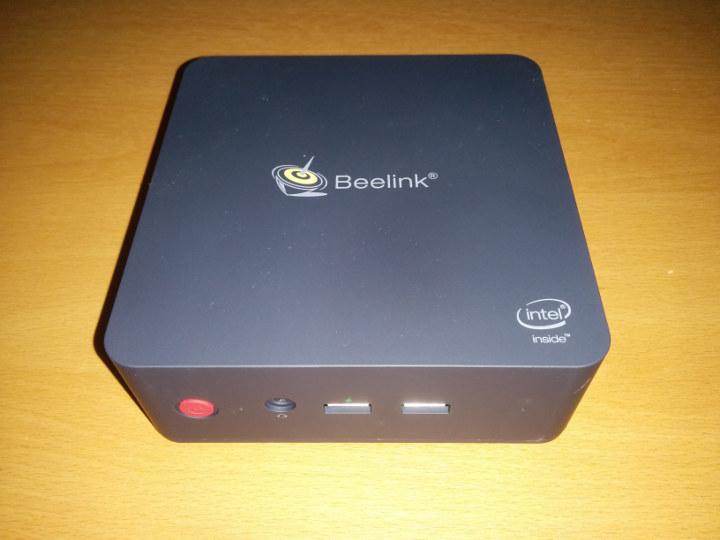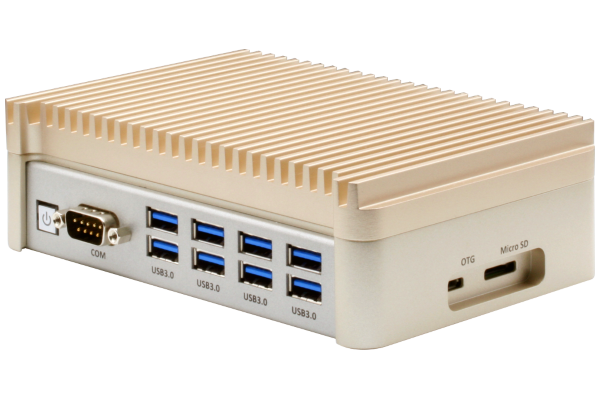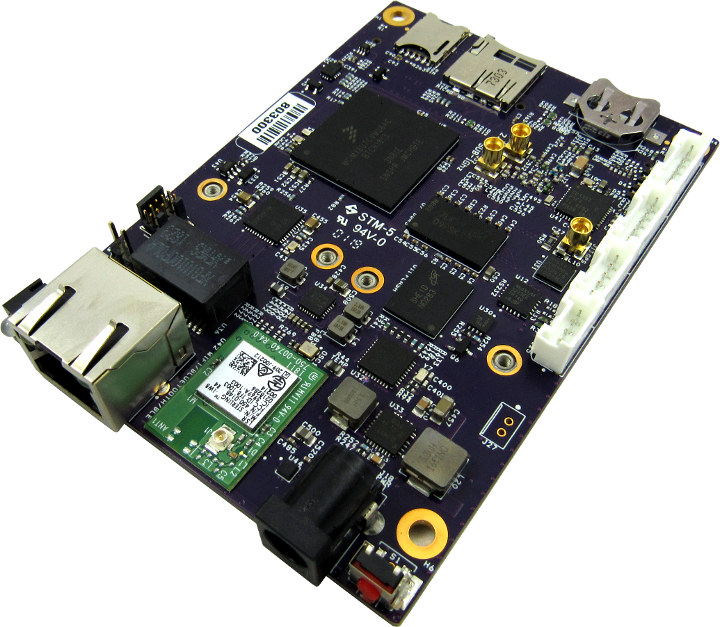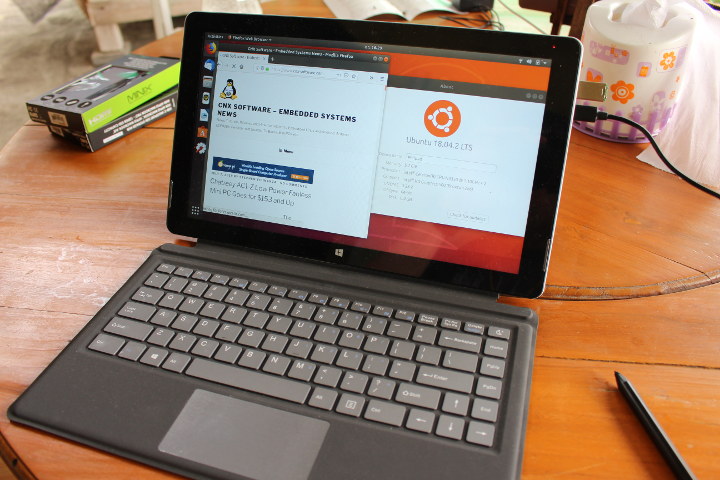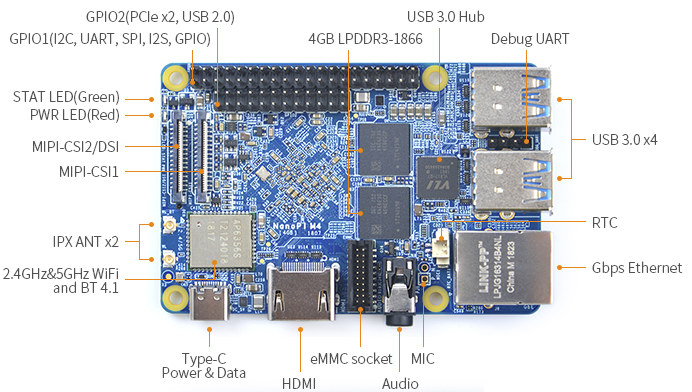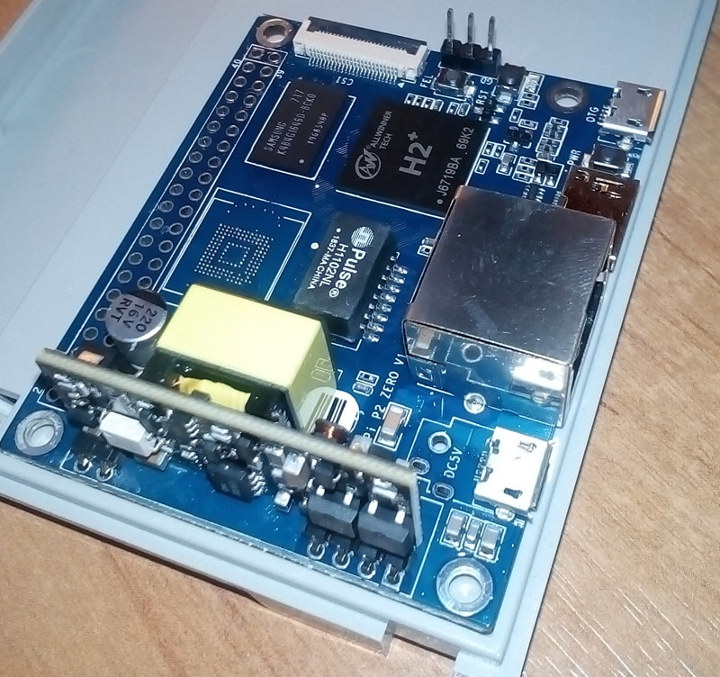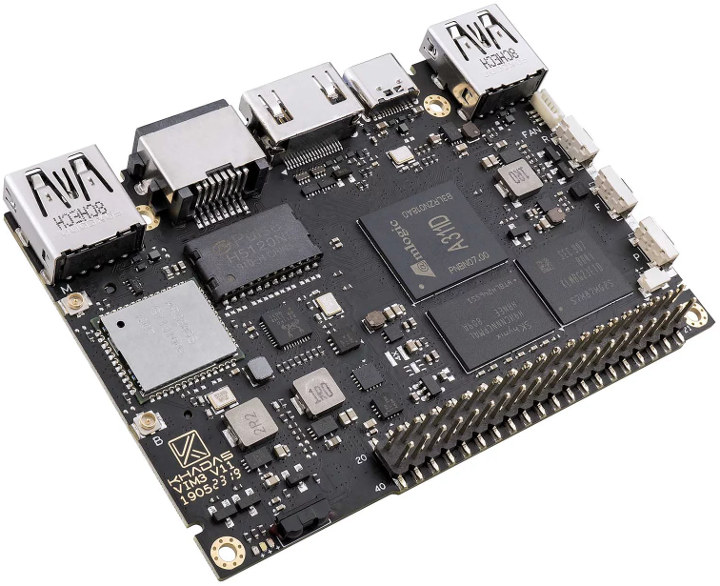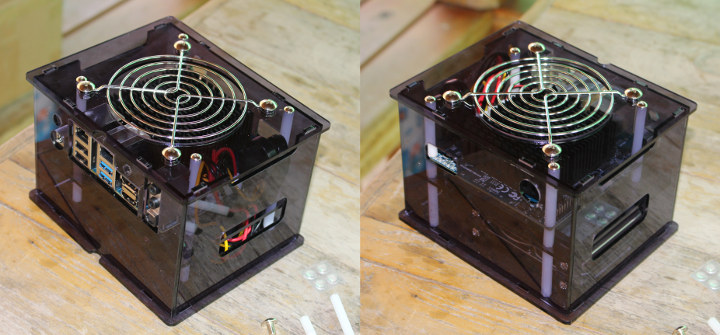With the shortage of Gemini Lake processors, some manufacturers have taken to releasing new mini PCs using older CPUs. The Beelink L55 is one such example and uses Intel’s Broadwell I3-5005U CPU which is a dual-core 4-thread 2.00 GHz processor with Intel’s HD Graphics 5500. The L55 is a ‘NUC’ style mini PC and physically consists of a 128 x 126 x 46 mm (5.04 x 4.96 x 1.81 inches) box case with a front panel that includes the power button, a headphone jack and a couple of 3.0 USB ports and then on the rear, two more 3.0 USBs, two 2.1 USBs, HDMI (1.4), DP and two gigabit Ethernet ports. Note that there is no SD or micro SD card slot. The full specifications include: The L55 comes with either a 256GB or 512GB (as tested in this review) M.2 SSD with pre-installed Windows 10 Home version 1809 together […]
AAEON Launches BOXER-8150AI Compact Embedded Box PC Features 8 USB 3.0 Ports
The new compact embedded solutions’ addition to the BOXER-8100AI family is specially designed for artificial intelligence (AI) support. According to its makers, AAEON, it has a configuration of eight USB 3.0 ports made available through four USB controllers chips. This makes it perfect for a wide range of computer vision applications, some of which are visual inspection, quality control, and facial recognition. Now, each USB chip controls a pair of USB 3.0 ports. By dedicating one chip to one pair of ports, each chip handles less data traffic overall. This also improves bandwidth from connected devices and allows the BOXER-8150AI to maximize speeds and framerates of AI image processing. The product is currently in stock and available for purchase on AAEON online store for $1,142.00. Key Features of BOXER-8150AI Nvidia TX2 Module HMP Dual Denver 2 + Quad ARM A57 8GB LPDDR4 32GB eMMC 5.1 HDMI 2.0 8x USB […]
Gateworks Ventana GW5910 SBC Targets WiFi, BLE & Sub-1GHz IoT Gateways
Freescale/NXP i.MX6 based Gateworks Ventana single board computers have been around at least since 2013 and were initially targeting networking processing applications for the industry. They could be used into all sort of gateways with cellular or WiFi connectivity for instance, thanks to the presence of mini PCIe sockets. But the latest Gateworks Ventana GW5910 SBC does not exclusively relies on mini PCIe cards for wireless connectivity, as it includes an onboard Laird Sterling 802.11b/g/n WiFi & Bluetooth module, as well as optional TI CC1352P dual-band Wireless MCU supporting Sub-1GHz and 2.4GHz RF, and an optional on-board u-blox GPS module, which should lower the total cost compared to solutions with mini PCIe cards. Ventana GW5910 specifications: SoC – NXP i.MX6 Dual Core Arm Cortex-A9 SoC Processor @ 800MHz System Memory – 512MB DDR3-800 SDRAM Storage – 256MB Flash System Memory, microSD card slot, mSATA socket Connectivity Gigabit Ethernet Port Onboard […]
Testing Ubuntu 18.04 on XIDU PhilPad 2-in-1 Hybrid with Touchscreen
So I’ve recently completed the review of XIDU Philpad 2-in-1 hybrid with Windows 10. The laptop features a 13.3″ touchscreen and support stylus, and I was intrigued whether those would work in Ubuntu 18.04. So I flash the Ubuntu 18.04.2 Desktop ISO to a flash drive and installed Ubuntu to another USB flash drive to give it a try with persistent storage. Note that while it’s OK for testing, running Ubuntu 18.04 from a USB flash drive is very slow, so it’s not recommended. The good news is that you can enter the BIOS by pressing either Esc or Del at boot time, an option is available to select Linux in the BIOS. I could then select Partition 1 in my bootable flash drive, and install Ubuntu 18.04 on the other drive with some patience, and everything works smoothly, albeit slowly due to using a cheap USB flash drive during […]
NanoPi M4 RK3399 SBC Price Drops to $50 and Up
The launch of Raspberry Pi 4 SBC has generated lots of interest, especially with the extra performance and low $35 price tag that has made most alternatives suddenly less interesting. However, Raspberry Pi 4 benchmarks show it’s not quite the fastest board around, and for example, Rockchip RK3399 platforms are still quite faster, sometimes as much as twice as fast. They do cost much more though, often more than twice, and so far one of the cheapest RK3399 boards was NanoPi M4 going for $65. FriendlyELEC has now decided, certainly in response to Raspberry Pi 4 offering, to lower the price to $50 for the 2GB RAM version which compares to $45 with Raspberry Pi 4 2GB, as well as $75 for the 4GB RAM version (was $95). NanoPi M4 specifications: SoC – Rockchip RK3399 big.LITTLE hexa-core processor with 2x Arm Cortex-A72 @ up to 2.0GHz, 4x Cortex-A53 @ up […]
Banana BPI-P2 Maker SBC with PoE Support Sells for $13 and Up (Promo)
Last year SinoVoIP introduced Banana BPI-P2 Zero board powered by Allwinner H2+ processor with 512MB, 10/100M Ethernet with Power-over-Ethernet, WiFi & Bluetooth, a mini HDMI port, and an 8 GB eMMC flash. They also launched a lower cost version without eMMC flash nor wireless module for $16, and the optional PoE module going for $6 extra. The company is now selling the board at a promotional price of $13 without PoE, and $19 with RT9600 POE module. The shipping fee is not included in those prices however, and in my case, the prices end up at respectively about $25 and $31 with shipping. Banana Pi BPI-P2 Maker specifications: SoC – Allwinner H2+ quad-core Arm Cortex A7 processor with Mali-400MP GPU. System Memory – 512MB DDR3 SDRAM. Storage – microSD card slot Video Output – mini HDMI port Connectivity – 10/100M Ethernet with optional PoE support Camera I/F – Parallel CSI […]
Khadas VIM3 SBC Launched with Amlogic A311D Processor, 5 TOPS NPU
We’ve previously written about Khadas VIM3 Amlogic S922X development board and revealed the price tag for VIM3 Basic ($69.99) and VIM3 Pro ($99.99) with a launch date announced for June 24. As time has passed, this has become “fake news” except for the launch date, as Khadas VIM3 SBC has indeed launched but for $99.99 (Basic) and $139.99 (Pro). What’s going on? Why the large price increase? That’s because Khadas team has decided to provide a more powerful platform to the community, and replace Amlogic S922X processor with Amlogic A311D processor boasting higher clock speeds and a 5.0 TOPS NPU. Another version may also become available later on with the soon-to-be-released Amlogic S922X-B processor whose Cortex-A73 cores are clocked at up to 2.2 GHz, instead of 1.7 GHz for the original Amlogic S922X processor that will be referred to Amlogic S922X-A in the future. New Khadas VIM3 SBC specifications: SoC […]
ODROID-H2 Rev B Review – Part 1: Kit Unboxing and Assembly
ODROID-H2 was announced in October 2018 as the first x86 SBC from Hardkernel. The board features an Intel Celeron J4105 Gemini Lake processor, two SO-DIMM slots for memory, two SATA ports and M.2 NVMe slot for storage, two Gigabit Ethernet ports, a mix of USB 3.0 and 2.0 ports, as well as HDMI and DisplayPort video outputs. The board went for sale the following month for $111, and the first batch of 2,000 boards was sold within 24 hours. In normal cases, this should not be a big problem, and in a few weeks, the company should have been able to produce more boards to fulfill the demand. But Intel decided to prioritize higher-end processors, and Gemini Lake SoCs’ manufacturing was put on the back foot. That means Hardkernel had to wait over 6 months to get supply of the Celeron J4150 processors. In the meantime, the company slightly redesign […]


